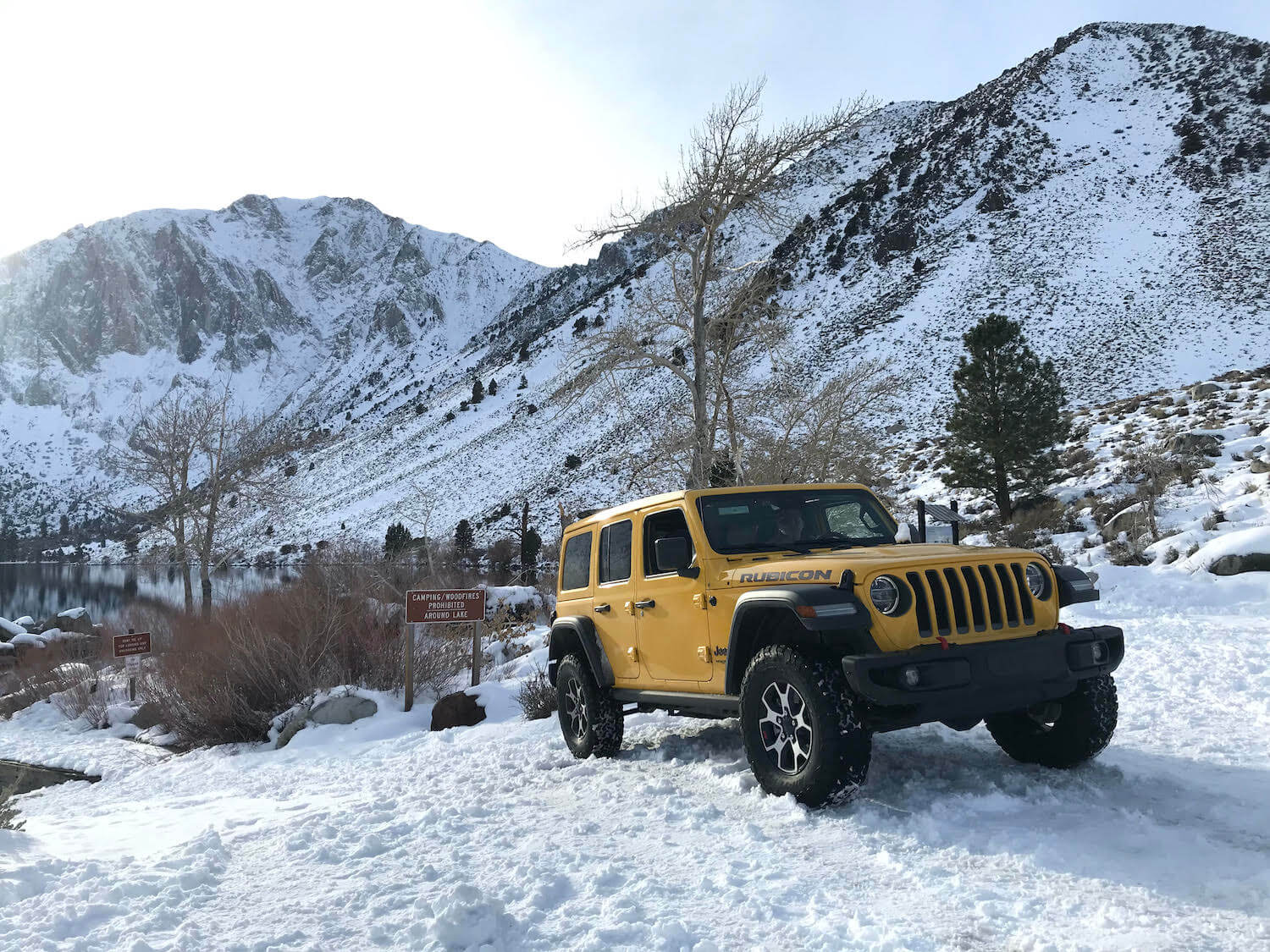
Best Snow Tires And Tire Chains For Your Truck or SUV
Photography by John Cappa and courtesy of the manufacturers
Driving in your car, truck or SUV in winter conditions dictates the need to consider tires that are rated for winter conditions, snow specific tires or tire chains. Which of these you need depends on your vehicle, where you plan to go and your on- and off-road performance expectations. Each winter traction option has pros and cons, so it’s important to select the right one for you. Not all of the options are available for every application. In some cases you’ll have to compromise because the most desirable product for your application simply isn’t available or doesn’t fit. Read on to find out the best way to improve the winter traction of your car, truck or SUV.
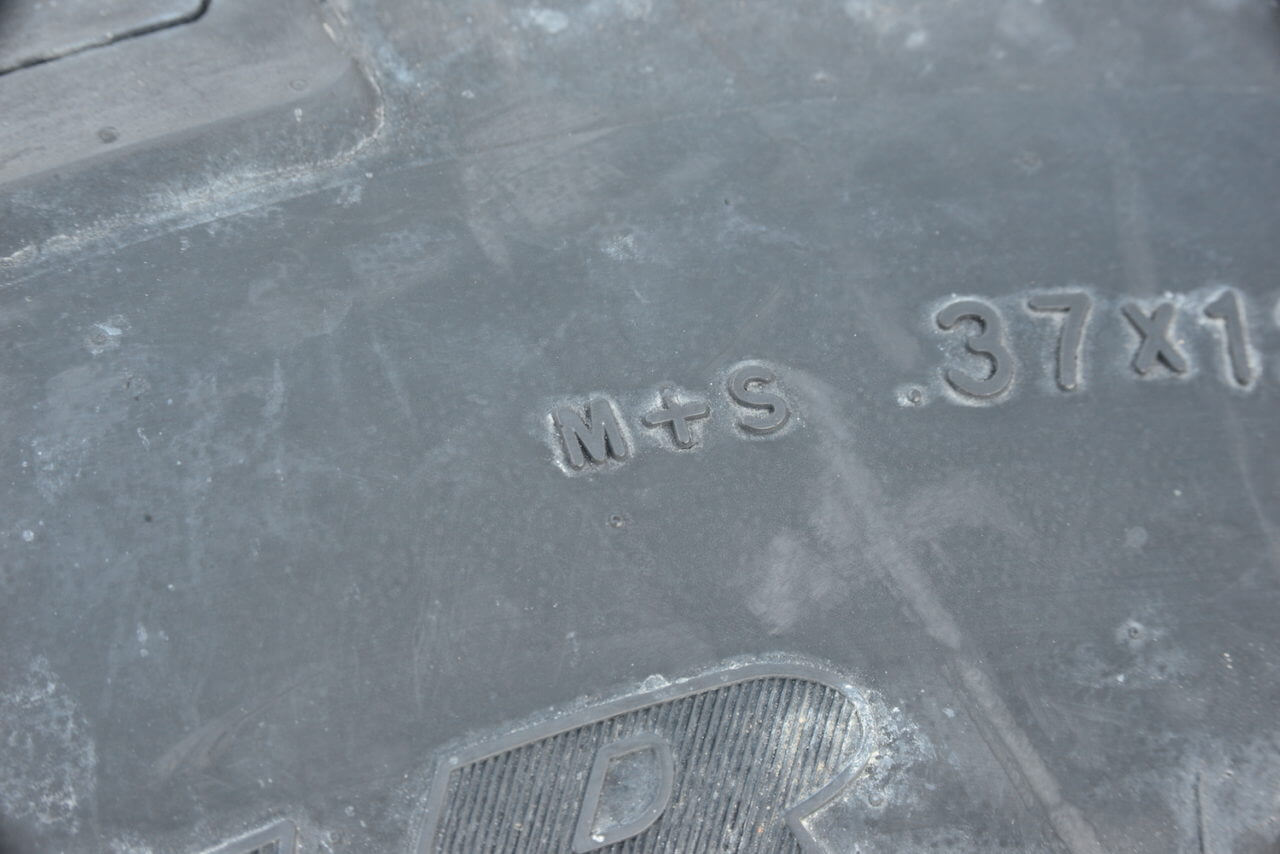
A tire with the M+S mud and snow rating emblem on the sidewall is the least you should consider if you plan to venture over ice and snow covered roads. The actual winter performance of the M+S rated tires will depend on the tire tread features.
M+S Mud And Snow Rated Tires
Pros:
- Available for many different tire sizes
- Can be used year-round
- On- and off-road performance isn’t affected outside of winter conditions
Cons:
- Not as good for snow and ice as 3PMSF rating
- Winter performance will vary depending on actual tread design
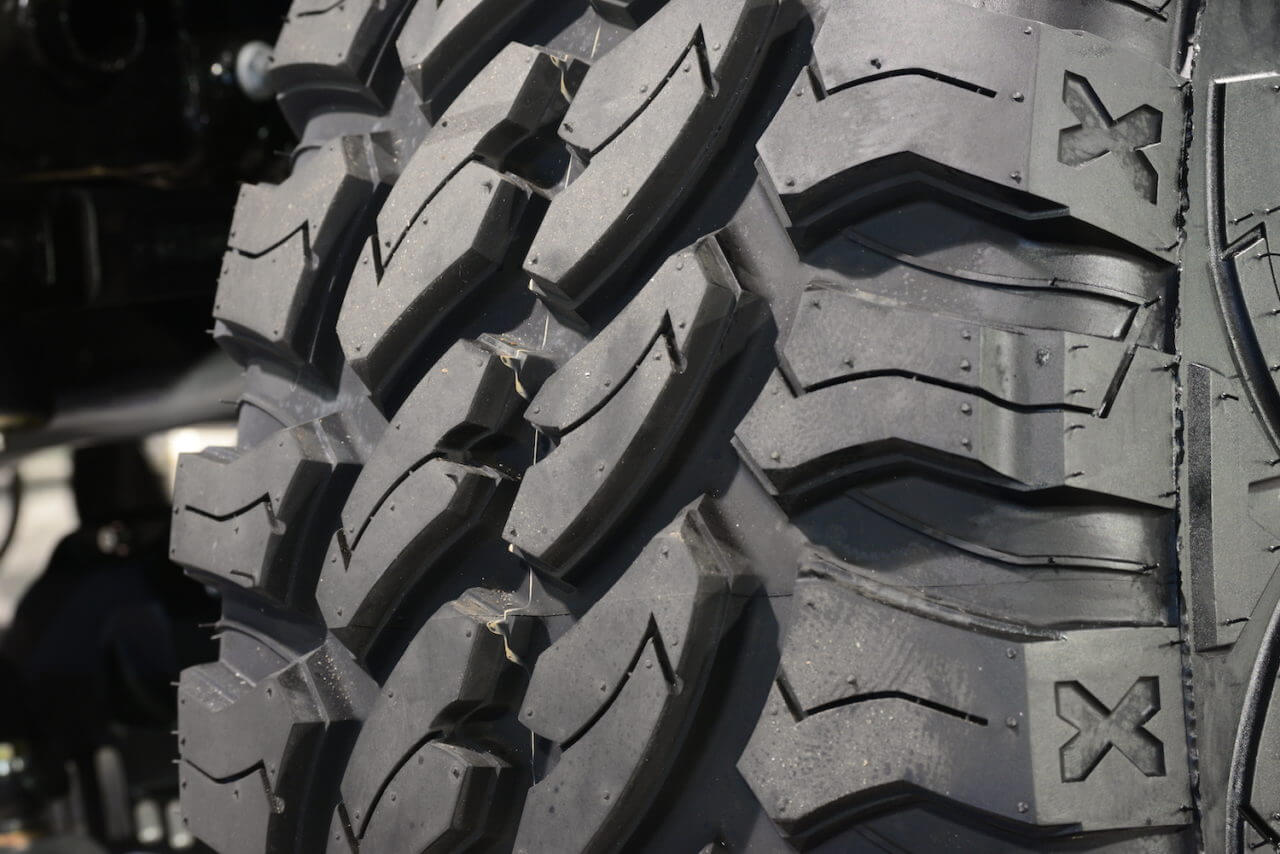
If you absolutely have to have true mud-terrain tires the rest of the year and have no choice but to run them in winter too, look for mud tires like the Pro Comp Xtreme MT2 that feature sipes and biting edges in the tread blocks. The more grooves and sipes the tread lugs have, the better.
Every A/T all-terrain, M/T mud-terrain and R/T rugged-terrain tire will feature a standard mud and snow rating, which is easily identified by the M+S imprinted on the sidewalls of the tires. However, the performance of each of these tire types in the snow and ice could be just as different as the tread patterns. Consider tires with the M+S mud and snow rating as the bare minimum for improved traction performance on winter roads.
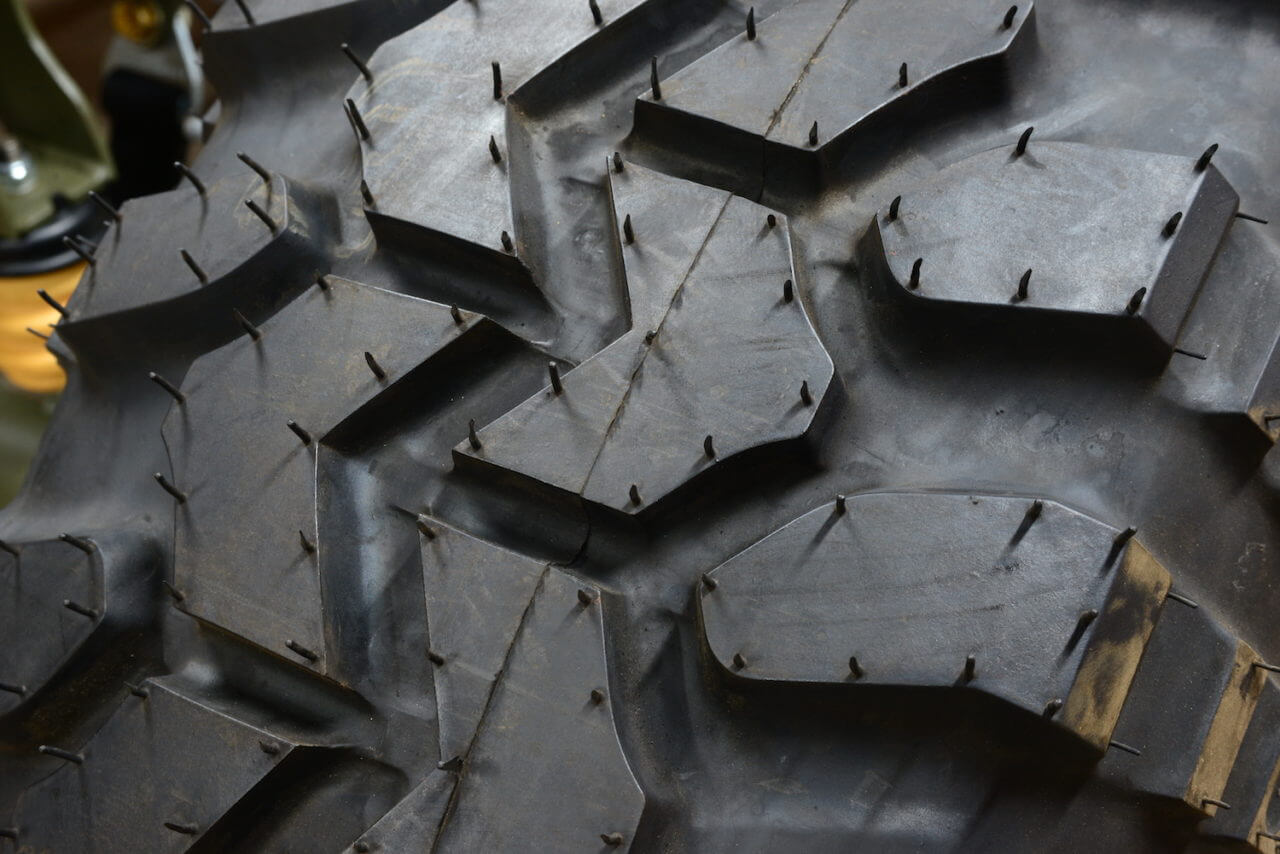
A tire tread pattern with large smooth mud-terrain tread lugs such as these will provide poor traction on ice and packed snow. This tire could make for a wild, exciting and unpredictable ride on winter-ravaged roads. In most cases mud-terrain tires are not ideal for winter conditions, even though they carry the M+S rating.
Certain tread features make a tire more snow and ice worthy than others. For example, the large smooth chunky tread blocks found on most mud-terrain tires provide the least amount of traction on winter roads. In fact, many mud-terrain tires rival a hockey puck when traversing packed snow and slick icy conditions.
Less aggressive tread patterns with many sipes cut into the tread usually offer the best performance in snow and ice. You’ll find that all-terrain and rugged-terrain tires typically perform better on-road in the snow and ice than their mud-terrain tire counterparts. Winter off-road performance is a different story. It can be hard to predict what’s hidden under the snow and ice if your tires break through. If it’s early winter or spring and there’s only a thin layer of melting snow and ice over a mucky and slimy trail, you’ll likely be glad to have some aggressive mud-terrain tires. This is a pretty specific scenario, so you’ll really have to think about if the poor performance on-road the rest of the winter season is worth the improved mud performance in melting conditions. For most of us the answer will be no.
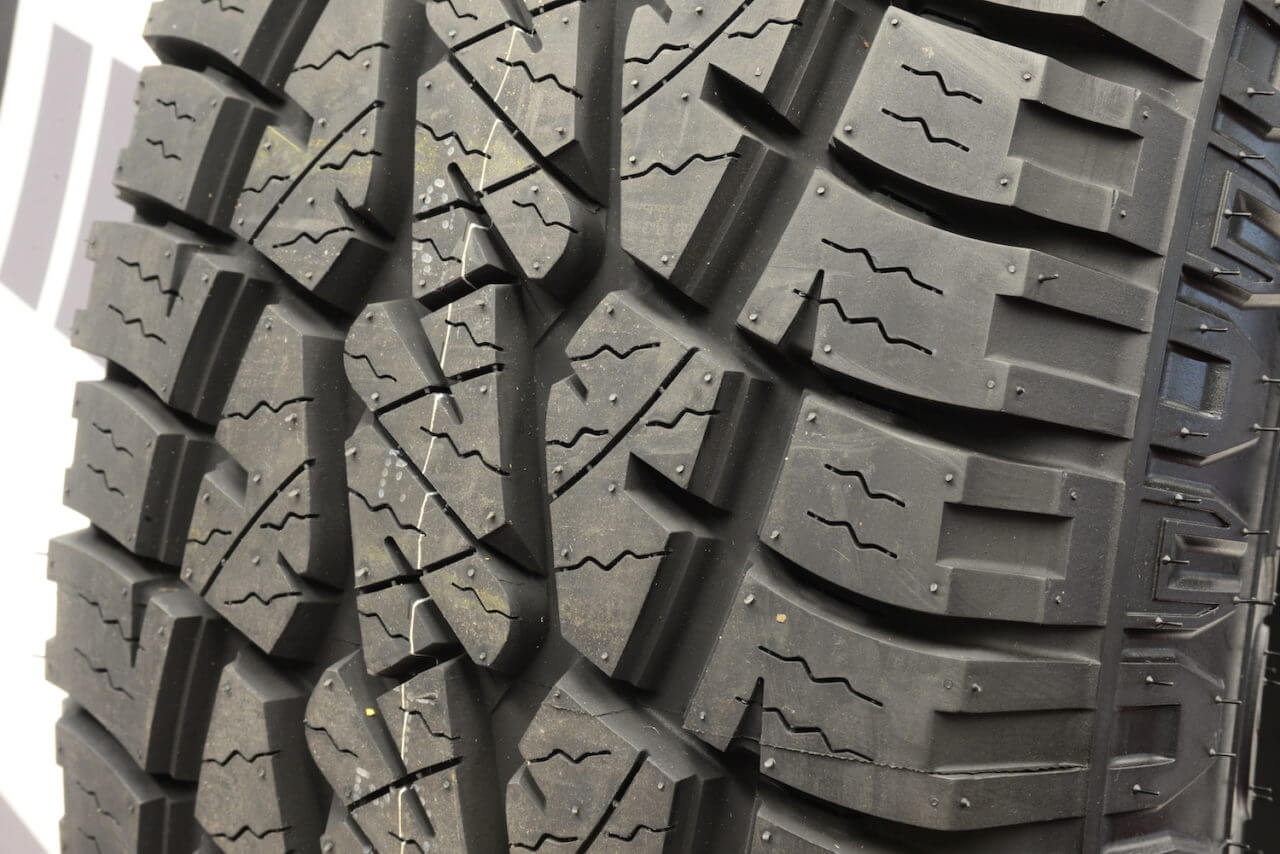
An all-terrain tire like the Pro Comp A/T Sport has many of the winter tread features you should look for in an M+S rated tire. There should be plenty of biting edges and sipes in the tread. These are the features that help the tires stick to winter surfaces.
Tires with the M+S snow rating are available in diameters up to 58 inches. However, if snow performance is important, you’ll want to look for large diameter tires that feature tread elements that work in winter, such as many small sipes in the tread rather than smooth chunky mud-terrain blocks.
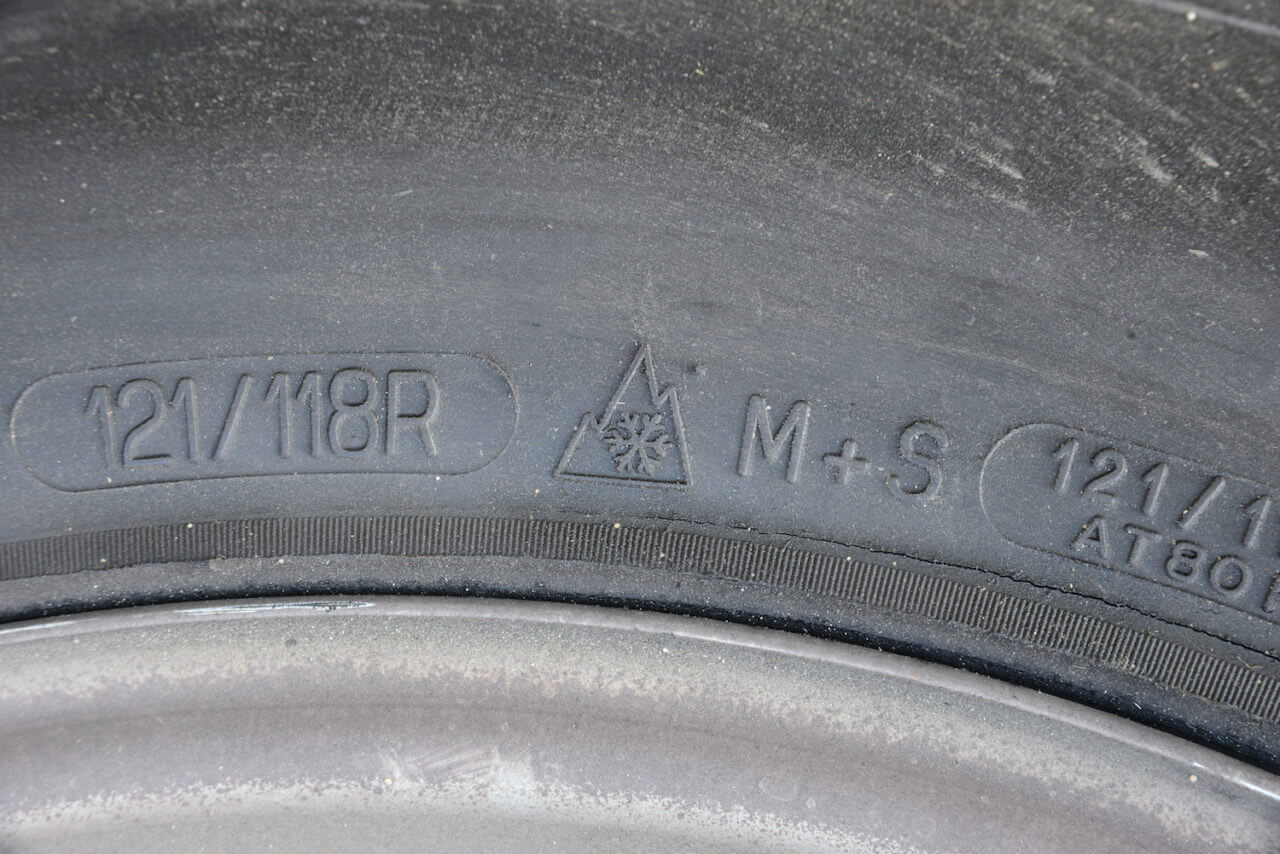
A three-peak mountain snowflake symbol branded on a tire’s sidewall indicates the tire meets specific required snow performance criteria. The tires are tested for braking and cornering performance on wet and rough ice, soft and hard-packed snow, and slush.
3PMSF Three-Peak Mountain Snowflake Rated Tires
Pros:
- Better winter performance than M+S rated tires
- Can be used year-round
- On- and off-road performance isn’t affected
Cons:
- Tire diameters limited to 35-37 inches
- Will not perform as well as an M/T tire in mud
Snow specific and snow rated tires aren’t anything new. Although, the three-peak mountain snowflake winter tire rating is a fairly recent addition to the 4×4 tire world. The three-peak mountain snowflake rating is also sometimes called 3PMSF. It is a severe snow service rating which identifies that a tire provides improved snow traction beyond what a standard M+S mud and snow branded tire offers. A three-peak mountain snowflake symbol branded on a tire’s sidewall indicates the tire meets specific required snow performance criteria. The tires are tested for braking and cornering performance on wet and rough ice, soft and hard-packed snow, and slush.
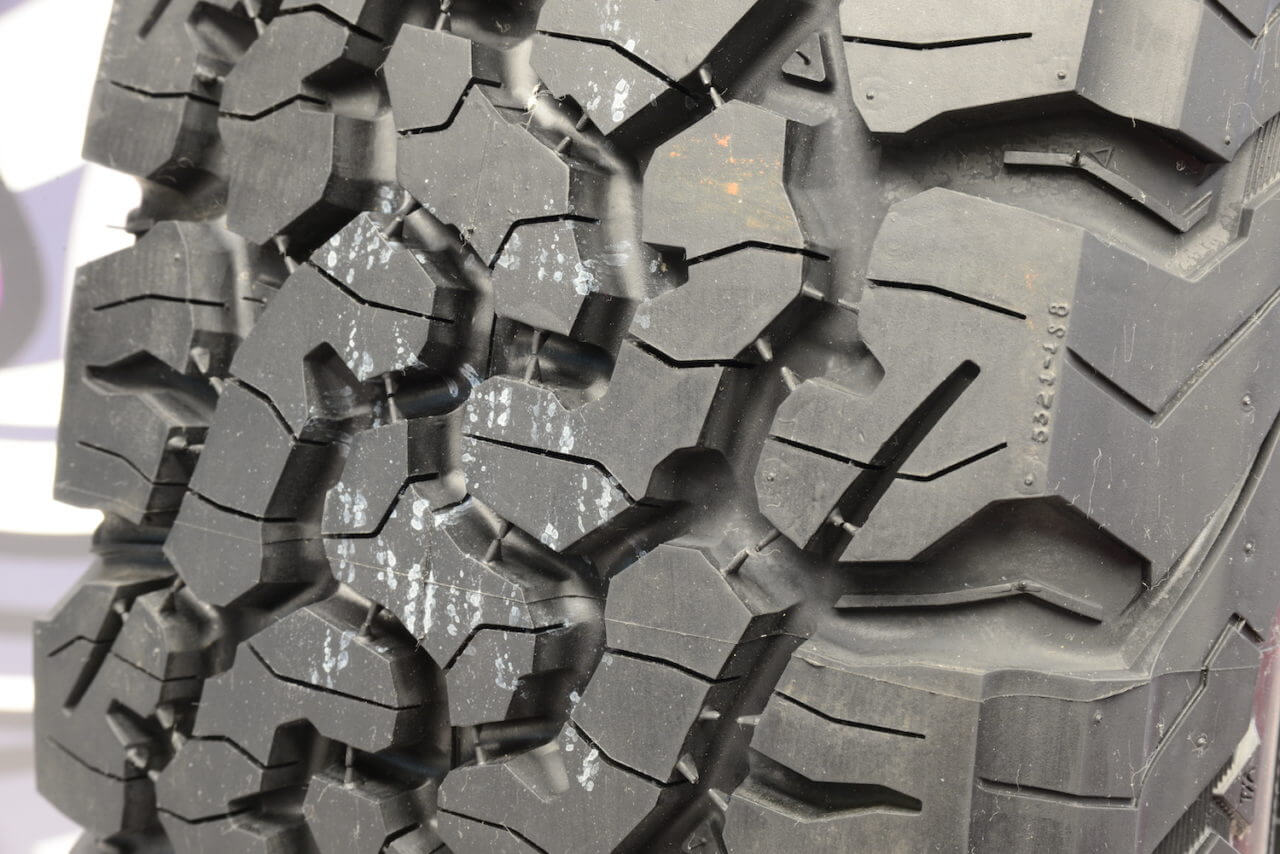
Tires with the 3PMSF rating are only found in the A/T all-terrain and R/T rugged-terrain tire categories. These tires feature lots of gripping edges, sipes and a softer tread compound that can maintain traction in the cold. One of the big advantages of these tires is that they can be used successfully on- and off-road year-round.
As expected, a tire with the 3PMSF symbol has all of the familiar tread features that provide traction in snow and ice. These features include smaller tread lugs with biting edges, sipes and softer rubber compounds. Not long ago there were only a handful of 4×4 friendly tires with the three-peak mountain snowflake rating, but today there are many. Most of these tires are less aggressive A/T all-terrain tires, but a few are R/T rugged-terrain tires that will work fairly decent in mud too.
Unfortunately, the one limitation that the 3PMSF rated tires have is available tire diameters. The largest diameter three-peak mountain snowflake tires come in 35- and 37-inch flavor. If you want a larger tire diameter you’ll have to settle for the less desirable M+S mud and snow rating and look for tread features that work in snow and ice.
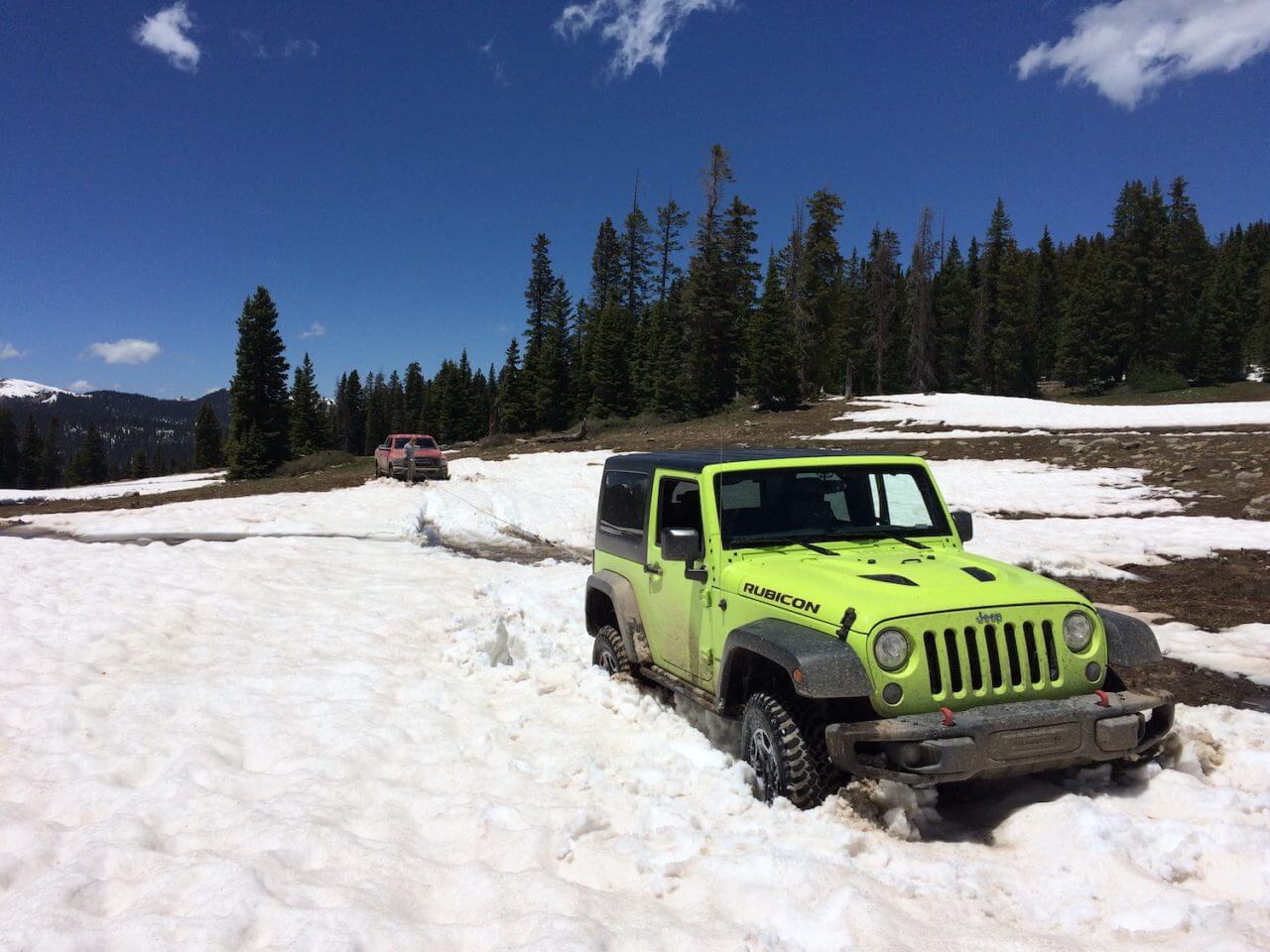
Early winter and spring melt conditions make tire selection even more difficult off-road. If there is slick mud hidden below the melted snow, you’re likely going to wish for a true mud-terrain tire. There are tire compromises you’ll have to make sometimes. Situations like this might call for the use of a more aggressive R/T type tire with the 3PMSF rating, giving you the best winter performance both on- and off-road.
Snow Tires
Pros:
- Best on-road winter performance of all tires available
- Available for most stock-sized tire applications
- No speed limitations
Cons:
- Winter-only tire
- Extremely limited tire diameters
If you’ve spent any amount of time in a white winter state, then you are probably familiar with winter specific snow tires. Of all of the winter rated tires available, snow tires provide the most traction for improved acceleration, braking and corning in the white slick stuff. Snow tires are designed to be seasonal tires, meaning you only put them on your vehicle in winter. Winter tires have tread patterns designed specifically to grip snow-, ice-, and slush-covered roads better than any all-season, M+S or 3PMSF rated tire.
The mild tread is absolutely covered in gripping sipes. The tread compounds found on winter tires are designed with special materials that stay soft to provide maximum traction in temperatures below 45 degrees. The drawback is that they can’t survive long on dry summer roads. The tires will wear out quickly if used in non-winter months. Once temperatures warm up, the snow tires have to come off and be replaced by something more suitable for the remaining seasons.

Winter specific snow tires offer incredible traction on icy roads. They feature numerous sipes and a very soft tacky tread compound designed for temperatures below 45 degrees. However, the lack of larger tire diameters, timid tread pattern and minimal tire sidewall reinforcement makes these tires less than ideal for a 4×4 that goes off-road.
One of the biggest hurdles in the use of snow tires is that they are only available in stock-sized tire diameters, the largest of which is about 33 inches tall. The second most insurmountable issue is that you have to have two sets of wheels and tires. One set for winter and one set for the rest of year. This is expensive and requires someplace to properly store the tires and wheels that aren’t being used. It’s even more problematic if you have to swap out the tires in the winter so you can actually go off-road with your larger diameter tires.
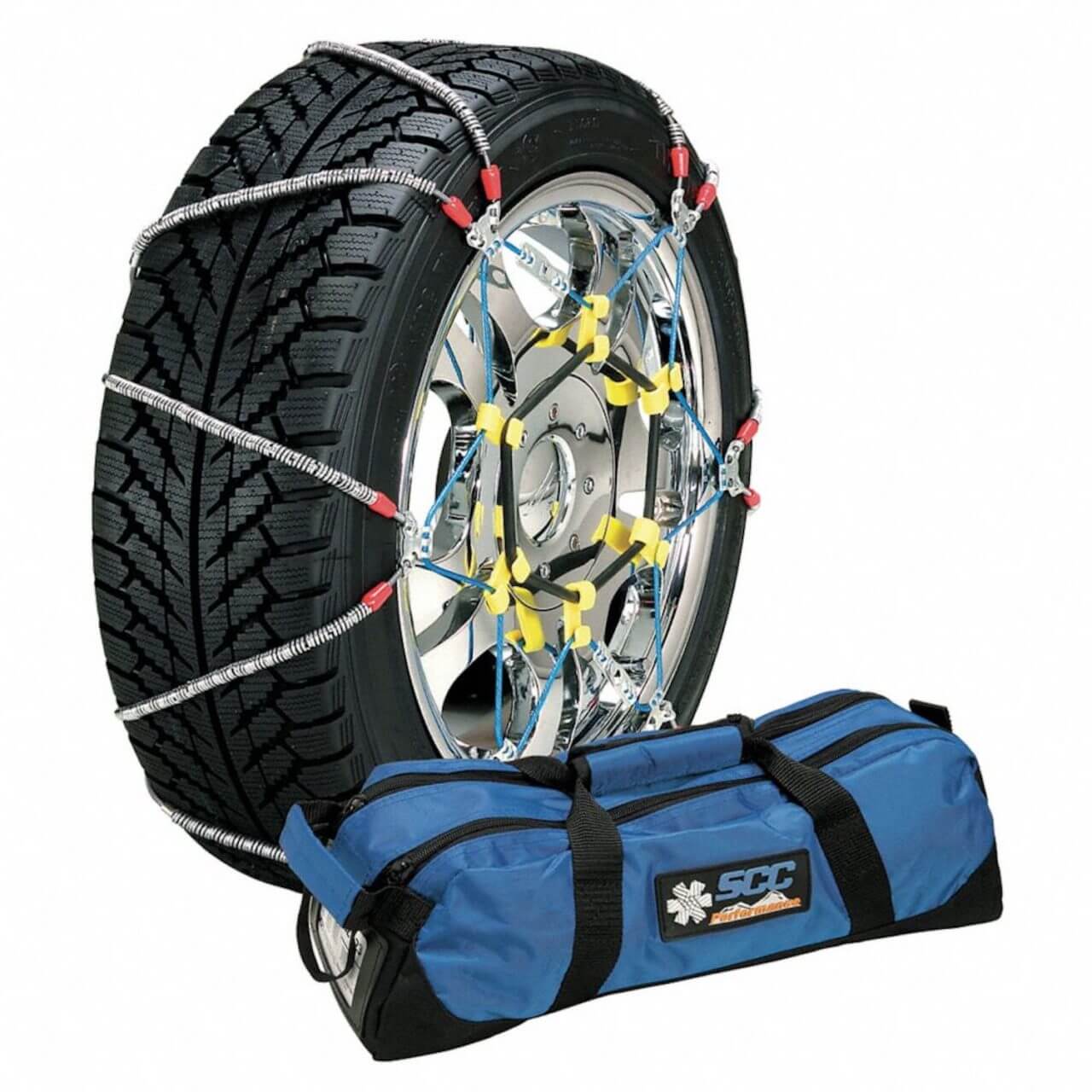
The lower price and easier installation of cable-type snow chains often lures unsuspecting buyers looking for chains for their 4×4. Cable-type snow chains should be reserved for low clearance applications where there is not a lot of real estate around the tires. Cables do not work as well as traditional tire chains on the snow and ice.
Tire Chains
Pros:
- Extreme traction on slick winter surfaces
- Can be used off-road too
- Many different sizes are available
Cons:
- Vehicle speed is limited
- Time consuming to install and remove
Tire chains become a necessary evil in really slick and icy conditions. Of course, most people avoid installing them until they absolutely have to or they have already slid off the road, and understandably so. Tire chains can be a real pain to install, especially for the inexperienced user. They come in many different sizes, however one set of chains will fit a range of similarly sized tires. Wrapping the chains around the tires and tightening them is only part of the headache. Having to spend 20 minutes to an hour in the cold weather and falling snow or freezing rain during the install is the other part of that pain. On the plus side, you can shorten extended installation times by practicing at home in more desirable weather conditions.
In some areas, local police and highway patrol officers will not permit passage without tire chains installed, or tire chains onboard if you have snow rated tires. What is acceptable for passage will depend on the conditions. It’s not unusual for drivers to show up to these tire chain check points unprepared, often forcing a purchase of whatever chains they can find locally to get to their destination. This can result in having to pay a premium for poor fitting chains or cables that may not be the best option for your vehicle. Ultimately, you are better off buying the right chains or cables before your trip to ensure you get the best chain type, size and price for your application.
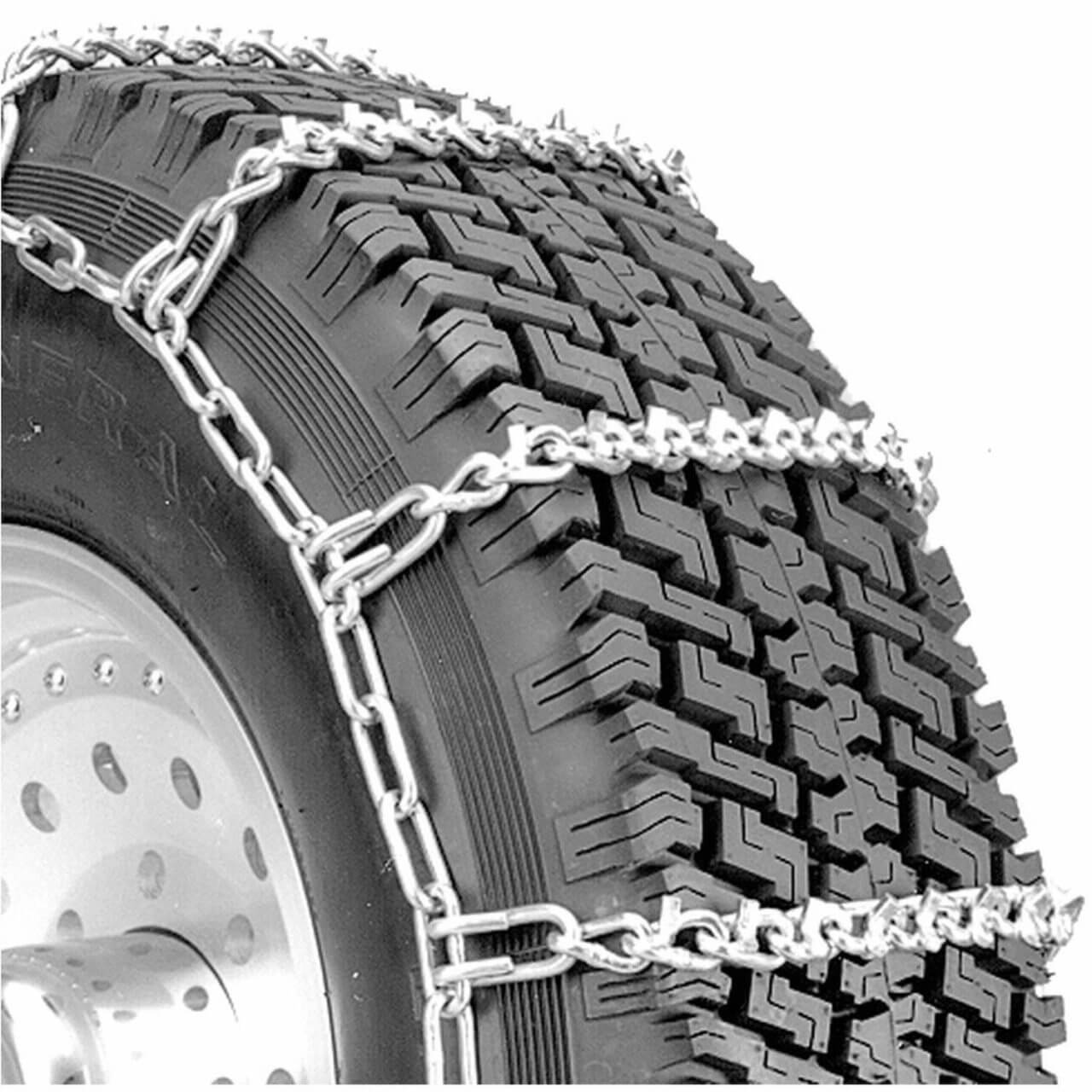
Maintaining traction on extremely icy and steep roads can be a real challenge. Where traditional tire chains are good, V-bar style tire chains are even better. V-bar chains have been designed specifically for extreme icy conditions. The traction surfaces of the tire chains are covered with welded-on metal V bars with sharp edges that dig into the ice for more traction.
You might find yourself drawn to tire cables because they are less expensive, more compact, lighter and usually less cumbersome to install than traditional tire chains. Unfortunately, you’ll generally want to avoid cable-type snow chains unless you have a low clearance application. Cable-style snow chains are less durable than real chains, don’t offer the same traction improvement as real tire chains and most importantly they don’t work all that well with modern traction control systems, especially on steep hills.
Traditional tire chains are preferred for most 4×4 applications that have plenty of clearance in the wheelwells and around the tires. Despite all of their drawbacks, such as limited speed, cost, weight, time consuming installation and the need to keep them tight, traditional tire chains provide more traction on slick winter surfaces than cables or snow tires alone. If you frequent areas known for an abundance of thick slick ice and steep hills, consider V-bar style tire chains. They feature V-shaped metal bars welded directly to the chain traction surfaces. The sharp edges of the V are designed to dig into the ice for more traction.
Any of the abovementioned tires and traction products will offer better winter performance than what you would see with traditional all-season street tires, so each is a great upgrade on its own. Although, in more extreme winter conditions you may find the need to add tire chains to your M+S or 3PMSF rated tires. Regardless of which route makes sense for you, plan ahead for winter and don’t get stuck without any options.



2